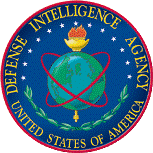United States Department of Defense

United States Department of Defense Military Intelligence
Date of this Version
9-1967
Document Type
Article
Citation
Since the Army reuses document numbers and titles, it is necessary to include the date to unambiguously identify manuals.
(1) FM 5-30, Engineer Intelligence, Sept. 1967
(2) Minimal FM 5-30, 1967
Abstract
(1) According to FM 21-205, 18 Jan 1944, "Field Manuals constitute the primary means of promulgating the basic doctrines of military training and operations."
(2) This manual supersedes FM 5-30, 1959.
(3) This manual is much different from the manual it superseded because before 1962 Engineer Intelligence was defined as intelligence about foreign military equipment and on military organizations analogous to the US Army Corps of Engineers. In addition, two civil organizations within the Corps of Engineers, the Board of engineers for Rivers and Harbors and the Beach Erosion Board, produced intelligence about foreign harbors and potential landing beaches of interest to the US armed forces. In 1962, when most of the Army technical services were reorganized out of existence, responsibility for intelligence about foreign military equipment was reassigned to the newly created US Army Foreign Science and Technology Center and responsibility for “area intelligence” was reassigned to the US Army Area Intelligence Agency which was soon after absorbed by the Defense Intelligence Agency when “area intelligence” was nationalized. The Corps of Engineers was not abolished because of its extensive civil functions, but its organization’s responsibilities were greatly altered by the 1962 reorganization.
(4) This manual defines engineer intelligence as concerned with electric power grids, which had been the responsiblity of the Army Signal Corps before 1962. It was also defined as concerning airfields, railways, highways, inland waterways, and ports which were the responsibility of the Transportation Corps before 1962. Both the Signal Corps and the Transportation Corps were abolished as technical services although their corresponding branches were retained.
Chapter 2 of this manual gives an extensive definition of engineer intelligence which includes various terrain and geography related topics, military engineer materiel, the order of battle of engineer units, and a long list of specific topics . It explains the collection, production, and uses of engineer intelligence.
Chapter 3 discusses engineer intelligence at the national level. It describes the role of DIA and FSTC and defense mapping organizatioins.
Chapter 4 discusses engineer intelligence in the field. Organizations at various levels had responsibility for collecting engineer information and using engineer intelligence.
Chapter 5 discusses the collection of engineer information and foreign military equipment. Illustrations of engineer intelligence information reports are provided.
Chapter 6 discusses the production of engineer intelligence.
Chapter 7 discusses dissemination of engineer intelligence.
Chapter 8 discusses the use of engineer intelligence for military planning and operations.
Included in
Defense and Security Studies Commons, Military and Veterans Studies Commons, Other Engineering Commons, Peace and Conflict Studies Commons, Soviet and Post-Soviet Studies Commons


Comments
This manual superseded FM 3-30, 1959 which is available in the UNL Digital Commons at:
http://digitalcommons.unl.edu/dodmilintel/103/